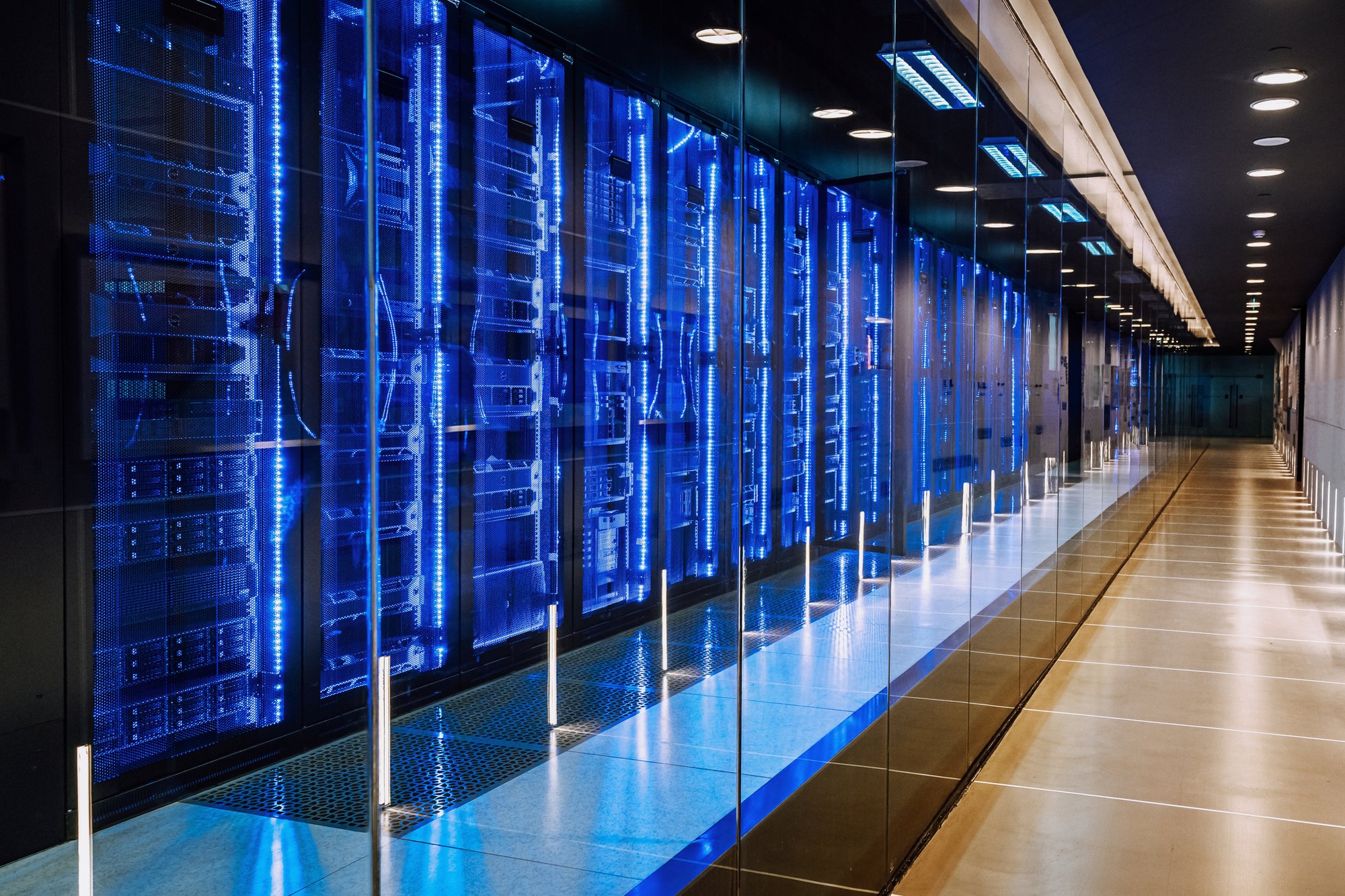Navigating data center growth

By Ebony Kennedy
March 31, 2025

The development of data centers is booming, driven by the rapid rise of artificial intelligence (AI). The demand for data-intensive technologies—such as telehealth, online gaming, and other cloud-based services—has further accelerated digital transformation. Over the past five years, this growth has led to a seventeen-fold increase in the number of U.S. data centers. But with exponential expansion comes new challenges for operators, consumers, and utilities.
A recent CBRE report notes the surging demand for AI and cloud computing is responsible for record new data center development, including in southern and midwestern markets like Charlotte, NC, northern Louisiana, and Indiana. These markets are desirable due to available land, greater power accessibility, and tax incentives.
While this growth is forecast to continue, it is important to note that just last month Microsoft canceled some data center leases. Analysts suggest it was due to “oversupply relative to its current demand forecast,” but most data center development is forging ahead, and those companies must navigate the complex regulatory landscape to mitigate policy risk while securing stakeholder confidence. Monitoring and responding to regulation and litigation will ensure data centers are well-positioned to benefit from federal and state incentives and fast-tracked approvals. Tracking local sentiment will help assess the likelihood and intensity of resistance from different stakeholders.
A deliberate approach will balance the competing priorities of rapid growth, long-term profitability, and energy impacts.
Impact on Resources
Data centers consume vast amounts of energy, and AI workloads are driving unprecedented demand—putting significant strain on existing infrastructure. Projections suggest that data centers could account for up to 9% of total electricity consumption by 2030, up from 3% today. Meanwhile, the nation’s power grid is nearing capacity, and renewables alone cannot meet this rising demand.
Community opposition is also growing. Residents living near new facilities have raised concerns about infrastructure costs being passed on through higher utility rates, as well as tax incentives awarded to data center developers.
Water usage is another major issue. Data centers use as much as 5M gallons per day to cool their systems, making them among the heaviest industrial water consumers. With AI expected to scale this need even further, communities already facing water scarcity are sounding the alarm. In 2023, Loudoun County, Virginia—nicknamed “Data Center Alley”—experienced a months-long drought, while data centers in the area consumed 1.8B gallons of water, a 250% increase from 2019.
Regulatory Variability
The enormous energy and water demands of data centers are prompting calls for tighter regulations to protect consumers and balance economic growth with environmental responsibility.
Some states are responding by linking sustainability goals to economic incentives. In Virginia, for example, new legislation requires data centers to maximize energy efficiency and use renewable power sources to qualify for tax benefits.
Utilities’ Opportunity
As critical infrastructure partners, utility companies are rapidly scaling up—building new plants and transmission lines to keep pace with demand. These infrastructure investments are substantial, projected to cost tens of billions of dollars. As much of this growth is tied to data centers, thoughtful stakeholder engagement is essential to ensure all customer segments—residential and commercial—are represented in planning and cost-sharing decisions.
In Georgia, lawmakers have repeatedly attempted—but failed—to pass legislation that would prevent utilities from passing infrastructure upgrade costs on to customers. This remains a key concern, especially as Atlanta became the top U.S. market for data center leasing in 2024, thanks in part to major investments from Google, Meta, and Microsoft.
Consumers have little appetite for paying more for what they view as no benefit to them, but industry lobbyists say more regulation is not necessary and many legislators are not inclined to squash the business growth in their regions. Navigating opposition amidst regulatory inaction requires strong community intelligence to ease tensions between data center growth and local preservation.
To build consumer confidence, utility providers must work with data center owners to find ways to lower energy use; balance rates with community benefit; and collaborate with local stakeholders on partnership opportunities that create long-term, mutual value.
Ready to realize breakthrough results?
The different types of growth that were enabled
With a more targeted approach, the client transformed its U.S. financial inclusion strategy—gaining a competitive edge and creating lasting impact.
lorem ipsum dolor sit amet, consectetur adipiscing elit, sed do eiusmod tempor incididunt ut labore et dolore magna aliqua. Ut enim ad minim veniam, quis nostrud exercitation ullamco laboris nisi ut aliquip ex ea commodo consequat. Duis aute irure dolor in reprehenderit in voluptate velit esse cillum dolore eu fugiat nulla pariatur.
Nemo enim ipsam voluptatem quia voluptas sit aspernatur aut odit aut fugit, sed quia consequuntur magni dolores eos qui ratione voluptatem sequi nesciunt. Neque porro quisquam est, qui dolorem ipsum quia dolor sit amet, consectetur, adipisci velit, sed quia non numquam eius modi tempora incidunt.
30%
9%
20%
43%
With a more targeted approach, the client transformed its U.S. financial inclusion strategy—gaining a competitive edge and creating lasting impact.
lorem ipsum dolor sit amet, consectetur adipiscing elit, sed do eiusmod tempor incididunt ut labore et dolore magna aliqua. Ut enim ad minim veniam, quis nostrud exercitation ullamco laboris nisi ut aliquip ex ea commodo consequat. Duis aute irure dolor in reprehenderit in voluptate velit esse cillum dolore eu fugiat nulla pariatur.
Nemo enim ipsam voluptatem quia voluptas sit aspernatur aut odit aut fugit, sed quia consequuntur magni dolores eos qui ratione voluptatem sequi nesciunt. Neque porro quisquam est, qui dolorem ipsum quia dolor sit amet, consectetur, adipisci velit, sed quia non numquam eius modi tempora incidunt.
